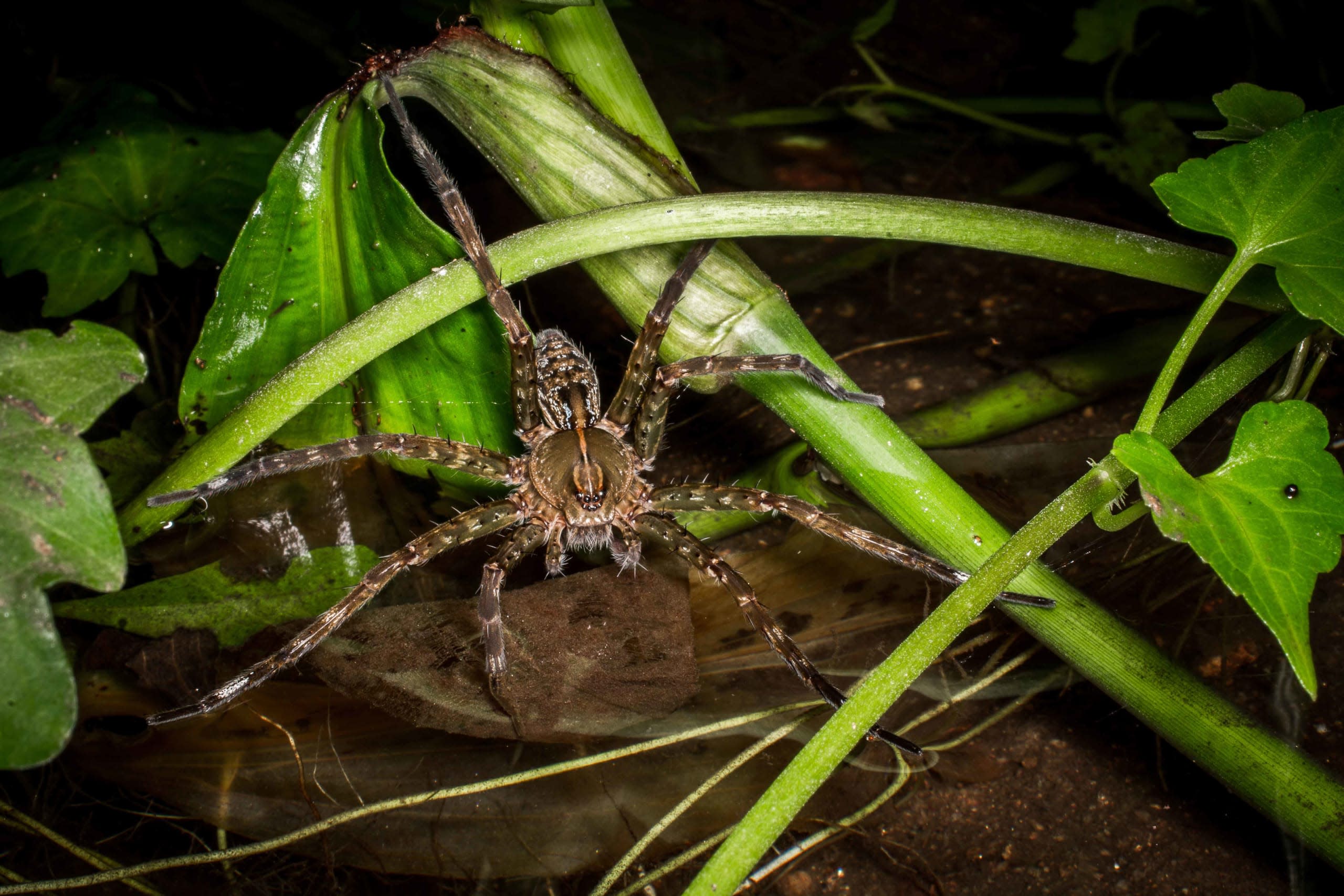 Listen to this article
•
15:34 min
Listen to this article
•
15:34 min
It’s always tricky to have a conversation about spiders in a room full of people; there’s a very good chance at least one person is not so fond of them. I’ve found that the mood changes when people start to hear more about these tiny wonders of evolution, whether it’s the colours on a Chrysilla volupe or the tensile strength of a golden orb-weaver’s web. The shade of fear on most faces slowly changes until it starts to resemble curiosity.
Among the many adaptations and traits that spiders possess, their seemingly endless methods of predation are a testament to evolution’s vivid imagination. Each method is adapted to the spider’s own strengths as well as the natural advantages present in its environment. While some use elaborate web structures to catch their prey, others rely on stalking and hunting. This allows them to prey on an impressive list of animals ranging from small insects all the way to birds.

Cover photo: Samuel John
Nestled on the banks of small bodies of water around the world, lives a hunter who does equally well to challenge our perception of the natural world, a spider that goes fishing! Spiders in the genus Dolomedes are commonly called ‘fishing spiders’ for a very intuitive reason. Preying on small fish, tadpoles and more often, insects on the surface of the water. Closer to home, they can be found around swamps, small streams and freshwater ponds throughout the forests of India. The streams of the Western Ghats are cradles of biodiversity and one of my favourite places to look for fishing spiders.
In keeping with the age-old tradition of ambush predators, they are typically well hidden. Each species carefully selects an environment that merges well with its colour and pattern. Once you’ve successfully seen past the camouflage, they are often seen sitting perfectly still waiting for their next meal. Often seen with one or two pairs of hind legs securely holding onto a relatively stationary object and two or three pairs of front legs either slightly submerged or on the surface of the water. They experience the world around them through touch; each ripple on the surface of the water, or even a minute chemical imbalance tells the spider all it needs to know about its environment. Once they’ve pinpointed the location of their prey, a short lunge and a quick injection of venom complete the hunt.
While courtship behaviour among fishing spiders is not a very well-studied subject in India, there are some remarkable behaviours that have been documented around the world. In some species like the Dolomedes triton, the female is known to mate only once. Any further suitors are usually subjected to sexual cannibalism (where the female kills and consumes the male at some stage of courtship). In others like the dark fishing spider Dolomodes tenebrosus, the male willingly sacrifices himself to be his partner’s next meal. Studies have shown that his sacrifice is not in vain and sexual cannibalisation of the male increases his chance of paternity and the health of his offspring.
After the mating cycle, the dutiful mother of the clutch safely tucks her egg sac under her sternum and carries them wherever she wanders. A short while before they hatch into little fishing enthusiasts themselves, the mother builds an intricate web on which she deposits the egg sacs. They hatch in the safety of this carefully constructed crèche. This is why fishing spiders and other spiders in the Pisauridae family are more commonly known as “nursery web spiders”.

All these mind-boggling traits of the fishing spider are just the tip of the iceberg and more work is needed in understanding their lives. While fishing spiders themselves are relatively understudied in India, it has been well-documented that the forests and freshwater systems they call home in the Western Ghats have experienced rapid changes. Over the past century, we have lost a significant portion of the Western Ghats to cultivation and vast plantations of tea and coffee. Over the past few decades, we’ve introduced a plethora of new threats ranging from polluting the freshwater systems to building dams for energy to modifying natural systems for residential or commercial development. Each of these changes impacts the ecosystem and consequently micro-habitat specialists like spiders.
In my own time living in a remote part of the Devala valley, tucked away in the Nilgiris, my colleagues from the local village would reminisce a time when the main stream in the village flowed mightily through the valley. While this stream still runs perennially, they speak of a time when it flowed steadily and not as erratically as it does now. Among the many challenges it poses, it makes planning an evening of fishing by the stream rather tricky for both its human and spider inhabitants.










